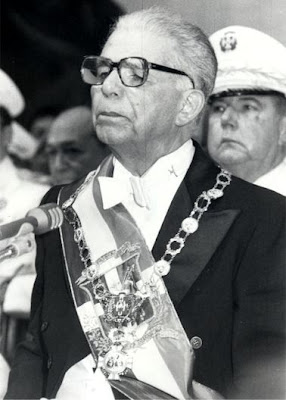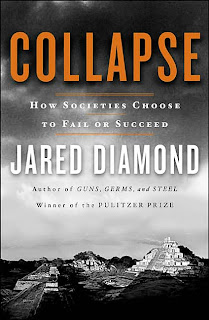We have heard the dreaded “R” word and seen its associated images for as long as we can remember. Thanks to their activities from Somalia to Sierra Leone, from Chad to Mozambique they have claimed their rightful, indelible place in Africa’s landscape.
The instantaneous effect of the chopped limbs, gangrenous wounds, burnt homesteads, mass graves, and other bold images that usually accompany rebel stories in the media is usually to send us reeling with disgust, grateful pity, and righteous indignation. At these moments when the tranquil sanctuary of our living rooms has been invaded, we are usually quick to side with the States’ official truths…that of rebels as violently-predisposed, idlers armed with weapons and illegitimate claims and deserving of no less than death for their unwillingness to concede to reasonable terms than could only lead to end of suffering and peace to all.
The lone voice in our heads that thirsts for the rebels’ stories is at these times deftly assigned to academia, religion and other forbidden spaces to be neatly tucked away under all-explaining theorems and black & white moral compasses. It is never too long before our minds find themselves again in the familiar, the comfortable. After all, some things are beyond our control, beyond the horizons of our permanent concerns, beyond our borders.
This time we cannot afford to play unwilling spectator. The classic, rebel script is the same only that this time the action is right in our backyards and swiftly posing a real threat to the sanctuary of our living rooms. After an instinctual grasping for the familiar, we have settled upon the multipurpose “tribal factor”.
Amidst all the violence, there’s been a flurry of rainbow-esque salvos for peace. Spearheaded by the Kenyan media, these glossy appeals are almost always accompanied by the national anthem & flag, or better still, by the now-all-too-famous Eric Wainaina ballad for the extra patriotic touch. Kenyans are invariably asked by media personalities and an assortment of well-meaning groups to lay aside their tribal differences and break free from the tentacles of selfish, ambitious, politicians.
Not surprisingly, the mainstream print and broadcast media have paid little attention to other realities underneath the blanket tribe factor. They have been at their most efficient in frantically (at the beginning of the post-electoral crisis) and then jadedly yet steadily covering the violence, internal and external displacement, injuries, body counts and other horror stories arising from the crisis. The recipients of these images and stories have been mostly the middle and upper class in Kenya (seeing as the poorest of the poor are too busy fighting for their lives and lack the time and resources to watch or read the news). By so doing, the media have unknowingly been complicit in changing the collective middle and upper class sentiment from one of initial shock, to helplessness, to the now unabashed apathy, which inevitably translates to a deep desire for business-as-usual.
As if vying for the highest medal in non-controversialness, the fourth estate has opted for self censorship manifest in the general keenness to stick to the realm of the politically-correct. “Communities” has become one of the most-used words in this latest fashion. Heaven forbid calling a spade a spade. In typical news coverage of the ongoing skirmishes, one is more likely to hear of “warring communities along the Burabu-Sotik border” as opposed to “Kisii and Kalenjin people fighting”. Reality check. We will need more than linguistic correctness to detribalize Kenya. If anything, the media’s refusal to acknowledge the ethnic dimensions that the post-electoral crisis has taken is akin to the proverbial ostrich with its head deeply buried in the sand.
What the syntactically-correct local, mainstream media has danced around CNN, AlJazeera, BBC and other international media giants have been quick to vocalize and over-simplify in their quintessential style. The post-election violence has been canonized as a “spectacular” (media thrives on the superlative) display of violence pitting the all-powerful Kikuyu versus the Luo, the Luhya (pronounced as Kikuyu, Luuoooo & Lahaya in those fantastic foreign accents) and other Kenyan tribes. The fighting and demonstrating Kenyans on the streets and in the neighborhoods have become the avatars of that age-old, anthropological phenomenon; Static, African minds trapped in ancient, age-old rivalries and unwilling to embrace the harmony of a dynamic, rainbow world. Without putting it into words, the local, mainstream media has repeatedly proved to all and sundry that they share similar sentiments.
If we bothered to solicit the opinions of the anti-government demonstrators, and machete wielding youths beyond the occasional one-liners and placard signs, If only their words carried as much weight as those of the verbose, university-educated political commentators (who the media ironically stopped featuring at a time when they were most needed to make sense of the happenings), we would be surprised at the commonalities that would emerge, the most recurring of which would be structural marginalization.
Kenya is flagrantly a class society. Our rich vs. poor gap arguably rivals that of any other country in the world. The salaries and allowances our MPs earn every month for dozing and drooling on the backbenches do not even come close to what George Bush Jr. takes home every month. Welcome to a land where those who have stolen billions from tax-payers’ coffers walk free with their empires intact and hold ministerial positions while the petty thief who steals a phone to survive promptly receives the justice of angry mobs on the streets. If you are still not convinced, turn your dial to the morning breakfast shows of Nairobi’s most-popular fm stations. Here you will meet Nyambane, King’ang’i, Filgonas, and an assortment of fictional Kenyan characters from different “communities” all united by their low caste. Unlike their savvy, cultured co-presenters, these characters share a happy-go-lucky attitude and lack the proper English accent, cultured humor, sophisticated thought and other signifiers associated with their co-presenters who are ultimately portrayed as more human. I present to you a nation that has made parody out of harsh, class realities.
December 27th witnessed an unprecedented election turnout in Kenya’s history. The fact that few civic and parliamentary candidates were re-elected bore testament to the simple truth that a vast majority of Kenyans from all walks of life, regardless of their ethnicity, wanted change. To reduce the opposition supporters to a group of Raila and Pentagon sycophant is to insult their common intelligence. Despite intense debates on the genuineness and feasibility of ODM’s manifesto, it was very clear to the visible eye that promises of accountable leadership, ethical governance, decentralization of government and development, progressive taxation, state welfare, and redress for Goldenberg, Anglo- leasing, and past economic crimes greatly appealed to the ordinary Kenyans.
These are the Kenyans who had seen a self-seeking upper class rise, like a phoenix from the ashes of the burnt dreams that fuelled the independence struggle. The post-independence political elite and their cohorts turned the country into their personal fiefdoms and made amassing indecent amounts of wealth for their families and cohorts and placing their communities in strategically beneficial positions their chief preoccupations. Under progressively, visionless regimes, Kenyans were turned into putty in the hands of foreign capital and political interests. Here is a leadership that shrugged off widespread poverty and inequality as unavoidable collateral to their primary quests for macroeconomic indicators without real development and patted themselves on the backs after reports of increased GDP growth.
Supporters of the opposition were therefore eager for a generational as well as ideological change in leadership. When this was denied to them, the same media who had the machinery to communicate their frustrations at being gagged by the live-ban broadcast conveniently avoided any discussions on the freedom of assembly and expression that was denied opposition supporters all over the nation when they attempted to protest their discontent with the botched election results. This is what led to the escalation of violence in the writer’s humble opinion. Kenyans denied their constitutionally-mandated channels of expression turned on one another.
Through it all, the mainstream media have repeatedly failed the people of Kenya by deliberately refusing to move beyond the passive observer persona to the next layer of analysis. There has been a glaring lack of incisive features exploring why, for instance, the most action has been witnessed in the so-called ‘slums’, ‘rural areas’ and ‘informal settlements’, with the more affluent residences seemingly ‘naturally’ predisposed towards peace. Other than the propensity of the young towards meaningless violence and destruction, the media has offered little other explanation as to why most of the protagonists in the skirmishes have been the youth, or why they have targeted roads, railways, and other symbols of economic wealth.
Even more shocking has been the media’s silence on the clearly differential access to police protection, relief assistance, evacuation, and other essential humanitarian services during this period. Despite the media’s silence on the glaring class contrasts of experiences in the midst of the crisis, it is not lost on the ordinary Kenyan that the Private Secondary schools and Universities attended by the children of the rich all over Kenya are operating as normal, somewhat of a luxury to many Kenyan families all over the country. I guarantee too that it is crystal clear to the ordinary mwananchi that the deaths of two opposition MPs in less than a week makes the phrase ‘coincidental crimes’ the understatement of the century.
And the violence continues in the background as the peace talks, the Africa Cup of Nations and other more important events gradually take center stage in the mainstream media. Nothing evidences this more than the cliché end-the-violence message being screened as a streaming caption at the bottom of the screen on KBC (state television) during the widely-syndicated Ghana-Nigeria football match, a dot of guilt to add the dash of conscience to what is quickly being erased by middle and upper class amnesia.
Behold the historically, economically, and politically justified wrath of three generations of Kenyans wronged. They might be silenced this time with machetes, live bullets, teargas, and other state machinery with the complicity of the media’s back-to-normal attitude. But unless we lift the carpet to address the injustices that have accumulated over the years, unless we start channeling national discourse the right way by asking the right, unsettling questions, they will rise again and again, like rebels with a cause, their rage incrementally intensified each time. Till we seek to find the stones that caused the ripples in the pond, there will be more stones thrown, leading to bigger ripples of threateningly seismic proportions that will sooner or later (to use the infamous verb of the former minister of internal security, he of the shoot-to-kill order), “rattle” the sanctity of our living rooms. Who more suited to lead this challenge the fourth estate?
-The Author, Gladys Onyango, is a Pan-Africanist and a freelance writer. She believes the material equality and dignity of all people as a goal worth striving for-

















